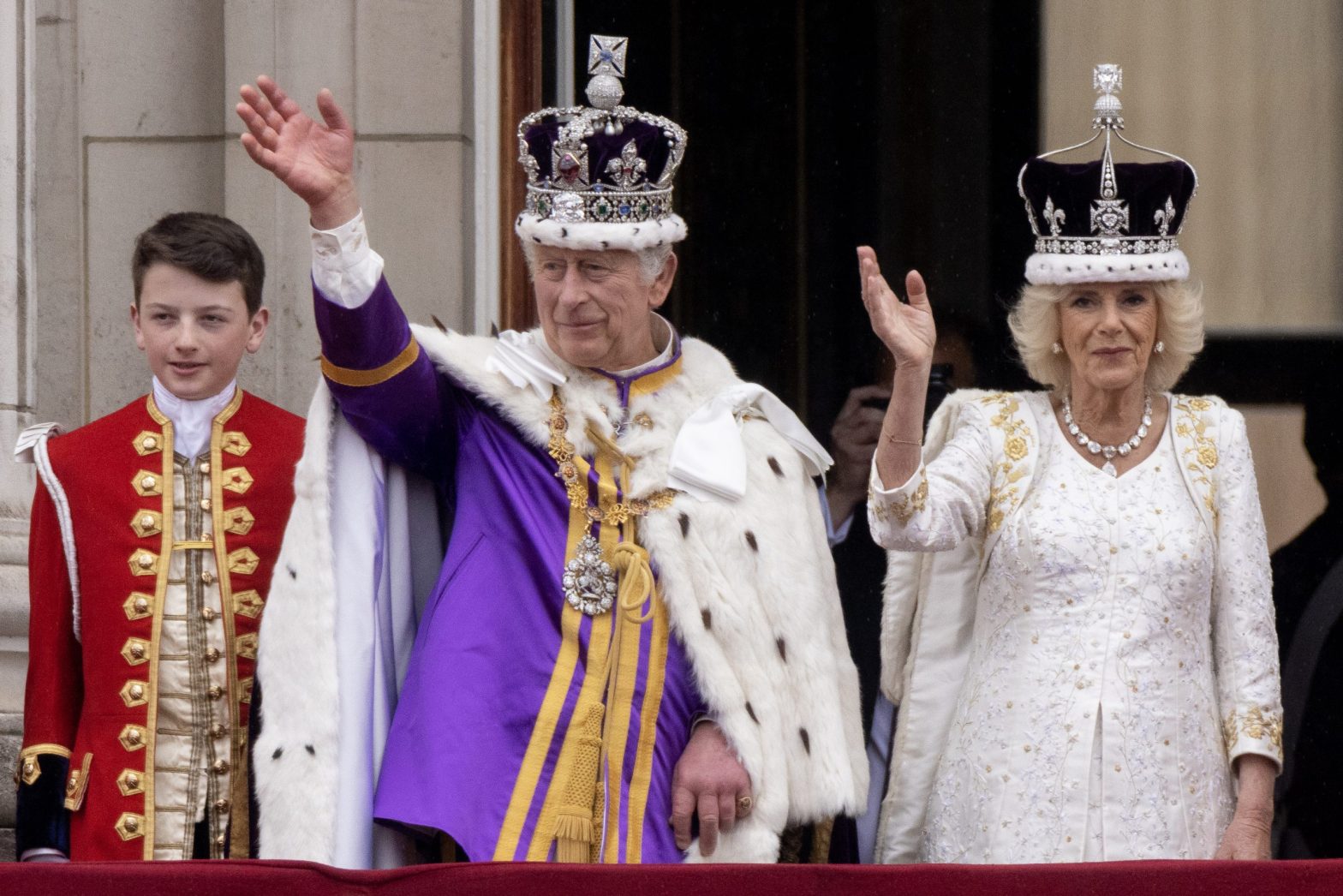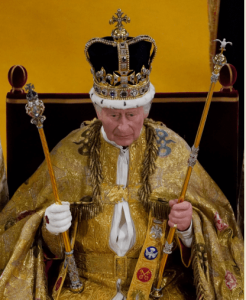
British Asian leaders have praised King Charles for using his coronation an essentially Christian ceremony which also showcased Britain’s “diversity of faith and communities” to pledge his life to service.
Last Saturday’s (6) coronation of the King as monarch of the UK and 14 Commonwealth countries was the first in Britain in seven decades. It was watched by 2,200 guests in Westminster Abbey and broadcast to millions in the country and abroad.
The multicultural ceremony was unique in that faith leaders from the UK’s diverse communities played key roles in the service.
“It was, in many ways – if you look at it from the perspective of the King – it was his day of destiny and something he’s been sort of waiting for and preparing for all his life,” Lord Jitesh Gadhia told Eastern Eye.
He said one of the most moving moments was when the King said, “I come not to be served, but to serve.”
“I found that very, very powerful. The message of service was the golden thread weaved throughout – not just the coronation service, but all the weekend activities,” Lord Gadhia said.
At last Sunday’s (7) concert there was a moving tribute that Prince William, the new Prince of Wales, gave to his father.
Gadhia noted that William also talked about service, effectively signalling that King Charles wanted to be coronated as the “servant king”.
The peer added, “The coronation service is an ancient ceremony, with its roots going back almost 1,000 years. But it was also very clear that the King was determined to shape the content in his own image, and especially to make it inclusive of multicultural Britain by involving diversity of faiths and communities. You could see his imprints all over the service.”
King Charles, 74, is the supreme governor of the Protestant Church of England and has described himself as a “committed Anglican Christian”.
However, leaders representing the country’s Hindu, Muslim, Jewish, Sikh, Buddhist, Jain and Parsi communities all took part in the coronation ceremony.
Ethnic minority peers presented regalia to the King during the service.
Lord Narendra Patel, a Hindu, presented the Coronation Ring to the monarch; Lord Indrajit Singh, the 90-year-old Sikh peer, gave him the Coronation Glove; Lord Syed Kamall, a Muslim of Indo-Guyanese heritage, handed over the Armills (bracelets), while Baroness Gillian Merron, a Jew, carried the Robe Royal to the King.
Each item of regalia holds a significant meaning.
The Coronation Ring, known as ‘the Wedding Ring of England’ was made for the coronation of King William IV in 1831. Worn at every coronation since then, it symbolises kingly dignity.
The coronation bracelets, known as Armills, represent sincerity and wisdom. The Robe Royal is the oldest robe in the king’s collection and was made for King George IV’s coronation in 1821.
The robe was worn as the crown was placed on King Charles’s head by the Archbishop of Canterbury. The Coronation Glove is a demonstration of the sovereign as an advocate and challenger for the protection and honour of the people.
“I was honoured to have been asked to take part. The whole ceremony involved different cultures, which was quite a powerful message,” Lord Patel told Eastern Eye.
“The King demonstrated he doesn’t just say things, he means it and he’s prepared to take action about it, which he showed at his coronation. He appointed people with different faiths, different cultures, different colours.
“I thought it demonstrated that we are a multi-faith, multicultural society, living in peace together.
“It was also quite emotional to me when the King swore an oath to serve God and the people, because it’s the king swearing allegiance to God – to your God, my God, his God, they’re all the same. And then the people. The King to swearing allegiance to the people is quite striking.”

Lord Kamall noted King Charles’s coronation reflected how the nation has changed since 1953, when the Queen was crowned monarch. “One of the ways to look at it is to compare it to the last coronation,” he said.
“My father came to Britain in 1952, just before the coronation. When you think about the problems he faced as an immigrant and all the challenges, and how the country has changed so much over the last 70 years, it was a welcome fact that the King clearly wanted to try and better reflect modern Britain,” the peer told Eastern Eye.
Kamall said he hoped the diversity of the ceremony would help younger generations of British Asians feel more connected to the monarchy.
Britain’s first prime minister of colour, Rishi Sunak, a practising Hindu, gave a reading from the Bible at last Saturday’s service. He described the coronation as “a proud expression of our history, culture and traditions”.
In another coronation first, the King prayed aloud during the service, to ask God that “I may be a blessing to all thy children, of every faith and conviction”.
Later, the chief rabbi, Ephraim Mirvis, joined British Muslim, Hindu, Sikh and Buddhist leaders in making a spoken declaration in unison towards their newly crowned monarch.
The unprecedented joint declaration read: “Your Majesty, as neighbours in faith, we acknowledge the value of public service. We unite with people of all faiths and beliefs in thanksgiving, and in service with you for the common good.”
Other faith leaders attending the coronation included Aliya Azam, interfaith coordinator at the Islamic AlKhoei Foundation; Radha Mohan from the Bhaktivedanta Manor in Watford; Lord Singh; Malcolm Deboo, president of the Zoroastrian Trust Funds of Europe; and Bogoda Seelawimala, the chief monk of one of London’s Theravada Buddhist temples.
Azam told Eastern Eye, “The King has long shown an interest in different faiths. Though clearly a devout Anglican who often visits Sunday services across the country, his interest in other religions and cultures has even led him to learn Arabic.
“Some have described him as a ‘perennialist’, believing that religions all share a common truth.
“King Charles’s reign begins at a time when the UK population is more diverse than ever. It’s clear the king appreciates and respects that diversity from the guests at the event to the choice of coronation dish, the quiche.”
Gadhia concurred with the view that the King had a long interest in bridging religious and racial divides.
“I definitely think the role of the head of state in our monarchy, in our unwritten constitution is to act as that sort of unifier,” he told Eastern Eye.
“His Majesty himself refers to that, about the UK being a community of communities. He’s the first person to recognise that there are different backgrounds and beliefs and multicultural diversity in modern Britain. That’s a legacy of the UK – its history.
“It’s the reason why we have the Commonwealth, which is something he has championed not just recently, but it dates going back many decades.
“Look at all the work of his various causes, not just the British Asian Trust, but the Prince’s Trust and various other initiatives that he’s undertaken here. They have all been about providing opportunities to people from diverse backgrounds, particularly young people. To try and make sure everybody can realise their full potential.
“That’s definitely one of the key themes of his last over 70 years as heir to the throne in waiting.” However, support for the monarchy varies among different age groups.

A YouGov poll from mid-April showed some 26 per cent of 18-24 year-olds think the monarchy is good for Britain, compared to 53 per cent among adults of all age groups.
That is a fall from findings in July 2019, when 48 per cent of respondents aged 18-24 said the monarchy was good for the country.
Kamall said, “I hope the coronation will be an example and a symbol of a more inclusive country. Someone emailed me after the coronation and said she was talking to a Muslim taxi driver, who said, having seen people of different faiths, he felt more included as part of the country. That was quite an interesting anecdote.”
Gadhia was also optimistic that the coronation would appeal to younger Asians.
He said: “Progress builds on progress. It’s been quite a shift in symbolism for an ancient Christian service to adapt and at least incorporate multi-faith elements. It’s part of a continuous process, so we should build on what we saw at the coronation.
“As far as His Majesty is concerned, he wanted the ceremony to be as inclusive as possible. He was particularly pleased that people of different faith backgrounds were able to participate, both in the presentation of the regalia and at the end, in greeting His Majesty after the coronation.”
He added, “The role of a head of state, the role of a monarch, in our unwritten constitution is designed to be symbolic. To be a unifier. To inspire people to a higher purpose.
“That’s one of the key reasons what a service like this does – it gives people in our democracy something that glues us all together.”